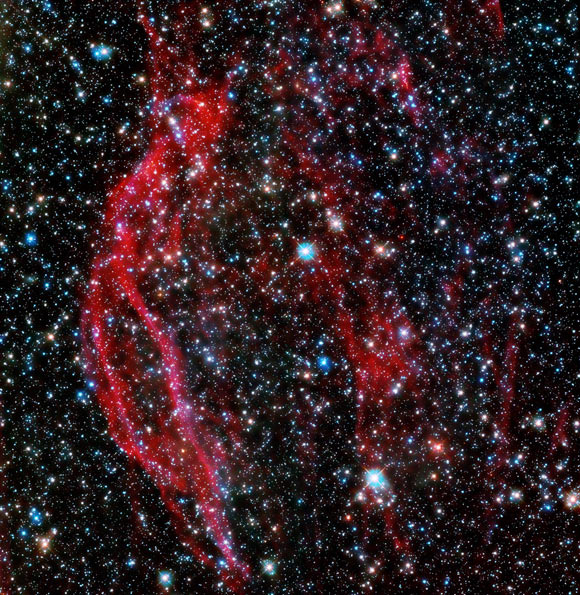The NASA/ESA Hubble Space Telescope shot this image of the supernova remnant DEM L249.

This Hubble image shows DEM L249, a remnant of Type Ia supernova located some 160,000 light-years away in the constellation of Mensa. Image credit: NASA / ESA / Hubble / Y. Chou, Institute of Astronomy and Astrophysics, Academia Sinica / Gladys Kober, NASA & Catholic University of America.
“These cosmic ribbons of gas have been left behind by a titanic stellar explosion called a supernova,” the Hubble astronomers said.
DEM L249 is located approximately 160,000 light-years away in the constellation of Mensa.
The object resides in the Large Magellanic Cloud, a satellite galaxy of the Milky Way.
Also known as SNR J053605-703826, 2E 1478 and CAL 61, it is thought to be the remnant of a Type Ia supernova.
“DEM L249 is an unusual supernova remnant,” the researchers said.
Hubble took the image of DEM L249 while searching for surviving companions of white dwarfs that went supernova in the Large Magellanic Cloud.
“White dwarf stars are usually stable, but in a binary system — two stars orbiting each other — a white dwarf can gravitationally pull so much matter from its companion that it reaches critical mass and explodes,” the scientists said.
They also analyzed data from NASA’s Chandra X-ray Observatory and ESA’s XMM-Newton satellite.
They found that the gas in DEM L249 was hotter and shone brighter in X-rays than the remnant of a typical Type Ia supernova.
“We suspect DEM L249’s white dwarf star was more massive than expected — heavier stars expel more gas — which also means it would have died earlier in its lifecycle,” they said.
_____
This article is based on text provided by the National Aeronautics and Space Administration.







